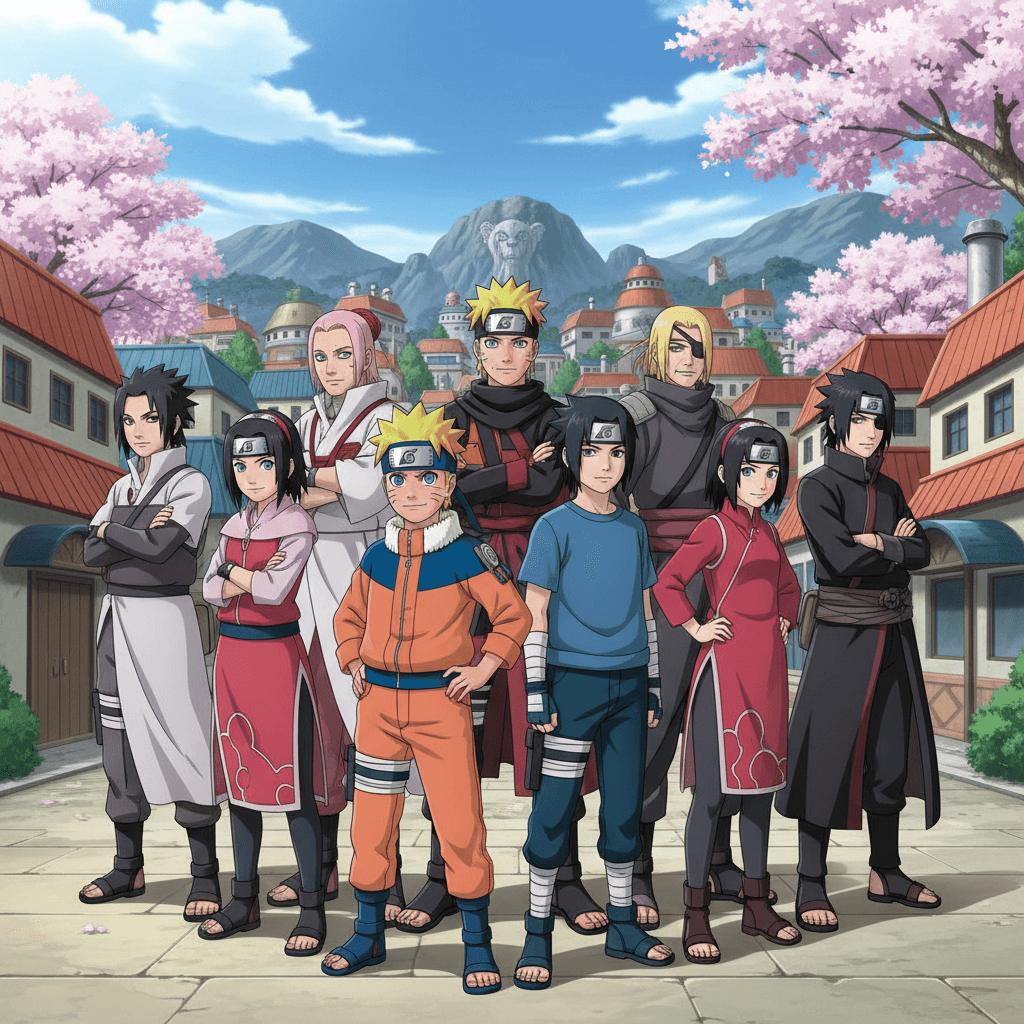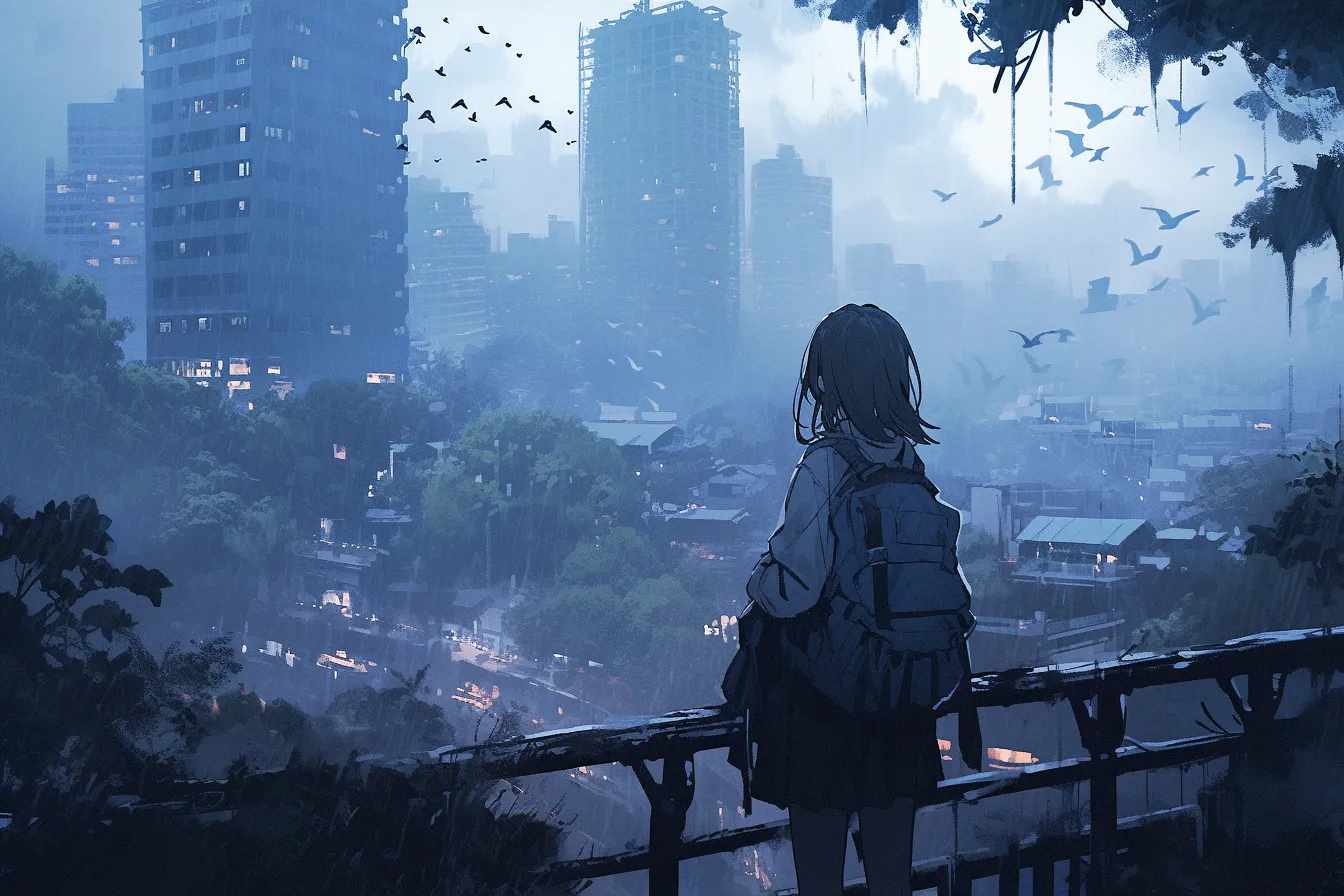Anime Style Evolution in Fashionable Outfits from Naruto

A group of Naruto characters wearing their iconic outfits, showcasing the evolution of anime fashion, with vibrant colors and unique designs, set against the backdrop of Hidden Leaf Village
The Journey of Anime Fashion Through Naruto
Anime has always been a vibrant and dynamic medium, showcasing not only compelling stories but also unique character designs and fashion trends. Among the plethora of anime series, “Naruto” stands out, not only for its captivating narrative but also for its significant impact on fashion within the anime community. The evolution of outfits in “Naruto” mirrors the growth of its characters and the changing times in both the narrative and the real world.
Character Design and Outfit Significance
In “Naruto,” each character’s outfit is carefully crafted to reflect their personality, abilities, and background. For instance, Naruto Uzumaki’s iconic orange jumpsuit symbolizes his energetic nature and desire to stand out. This bright color choice contrasts sharply with the muted tones worn by other characters, emphasizing his role as an underdog striving for recognition.
The design elements extend beyond mere aesthetics; they often serve a practical purpose as well. For example, ninja attire is designed for agility and stealth. Characters like Kakashi Hatake wear functional clothing that allows for ease of movement while still representing their rank and affiliation within the ninja world. This blend of form and function is a hallmark of anime fashion, particularly in “Naruto.”
Evolution Across Seasons
As the series progresses from “Naruto” to “Naruto: Shippuden,” we witness a notable evolution in character outfits that parallels their personal growth and maturity. Young Naruto’s simplistic design transitions into more sophisticated attire that reflects his journey towards becoming a skilled ninja. This evolution in fashion not only marks his development but also signifies a broader thematic shift within the storyline – from childhood innocence to adult responsibilities.
Characters like Sakura Haruno showcase this transformation vividly. In her early appearances, she wears typical kunoichi (female ninja) attire that is functional yet somewhat traditional. As she matures, her outfits evolve to incorporate more modern styles while maintaining a nod to her roots as a warrior. This interplay between traditional elements and contemporary fashion trends is reflective of the cultural landscape during which “Naruto” gained popularity.
Influence on Real-World Fashion Trends
The impact of “Naruto” on fashion extends beyond its animated frames; it has influenced real-world clothing trends as well. Cosplay culture thrives on recreating these iconic looks, allowing fans to embody their favorite characters through clothing. The rise of streetwear inspired by anime has led to collaborations between fashion brands and artists who pay homage to series like “Naruto.”
Items such as hoodies featuring team logos or graphic tees displaying artwork inspired by key moments have become staples in casual wear. This fusion of anime aesthetics with everyday fashion illustrates how “Naruto” transcends its medium, creating a lasting legacy that resonates with audiences globally.
Conclusion: A Reflection of Culture
The outfits seen in “Naruto” are more than just clothing; they encapsulate cultural values, character development, and artistic expression. As we explore the evolution of these fashionable ensembles throughout the series, we gain insight into the characters’ journeys while appreciating how they have shaped contemporary fashion trends within and beyond the anime community.
In essence, “Naruto” serves as a mirror reflecting not just individual growth but also broader societal shifts in style and identity – making it an enduring influence in both anime and fashion realms alike.
💬 The comment system is temporarily disabled.
If you have any questions, please contact us through other means.
